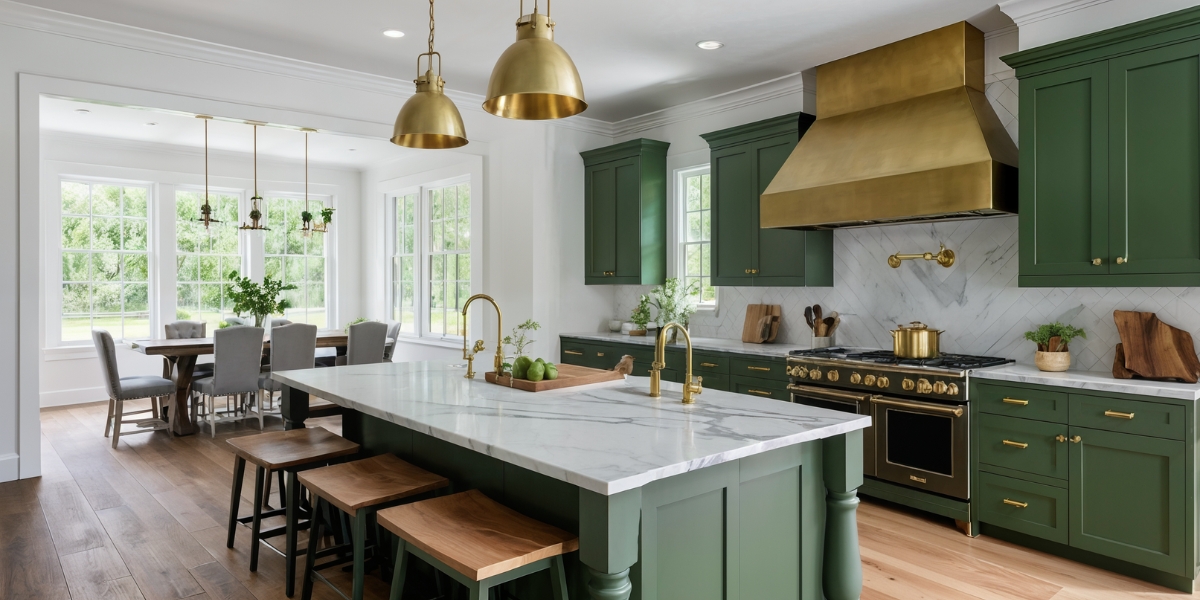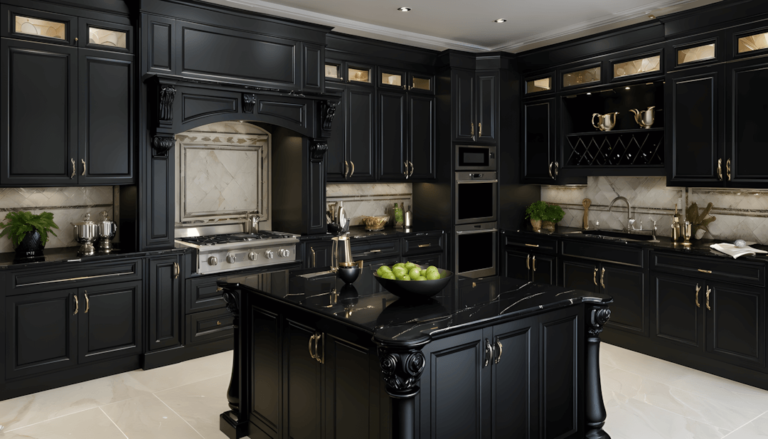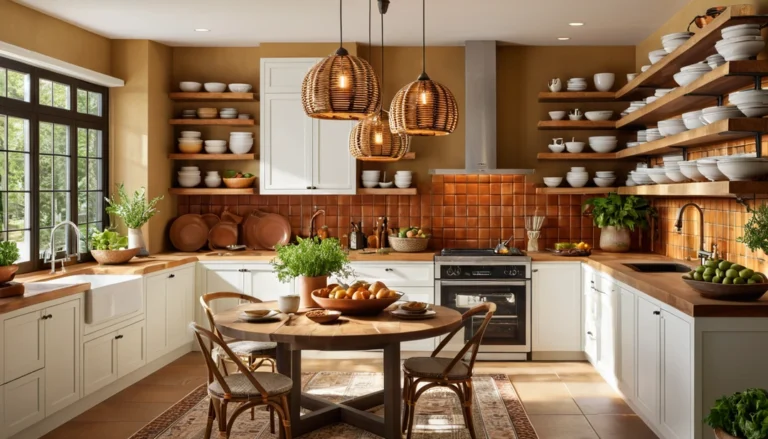In my experience working with homeowners on farmhouse kitchen projects, I’ve observed that incorporating green color elements often adds natural warmth and timeless appeal while maintaining the rustic charm characteristic of country-style design. Through various farmhouse renovation consultations, I’ve learned that successful green farmhouse kitchens typically balance color intensity with practical functionality and coordinate green elements with traditional farmhouse materials.
Note: For any structural modifications, electrical work, or installations mentioned in this article, always consult with licensed professionals to ensure safety and code compliance.
What makes green farmhouse kitchen design particularly appealing is its ability to bring nature-inspired tranquility indoors while preserving the cozy, welcoming atmosphere that defines farmhouse style. I’ve found that homeowners often choose green accents because they typically provide the calming environment that makes kitchens feel connected to natural surroundings while supporting daily cooking and family activities.
The key to successful green farmhouse design often lies in selecting appropriate green tones and balancing them with traditional farmhouse elements like natural wood, vintage hardware, and classic materials. Effective green farmhouse solutions typically incorporate quality finishes, proper color coordination, and designs that enhance rather than overwhelm the rustic aesthetic.
Here are 15 approaches for green farmhouse kitchen design that often work well in different home styles and sizes, based on observations from various country-style renovation projects.
1. Sage Green Cabinetry with Open Storage
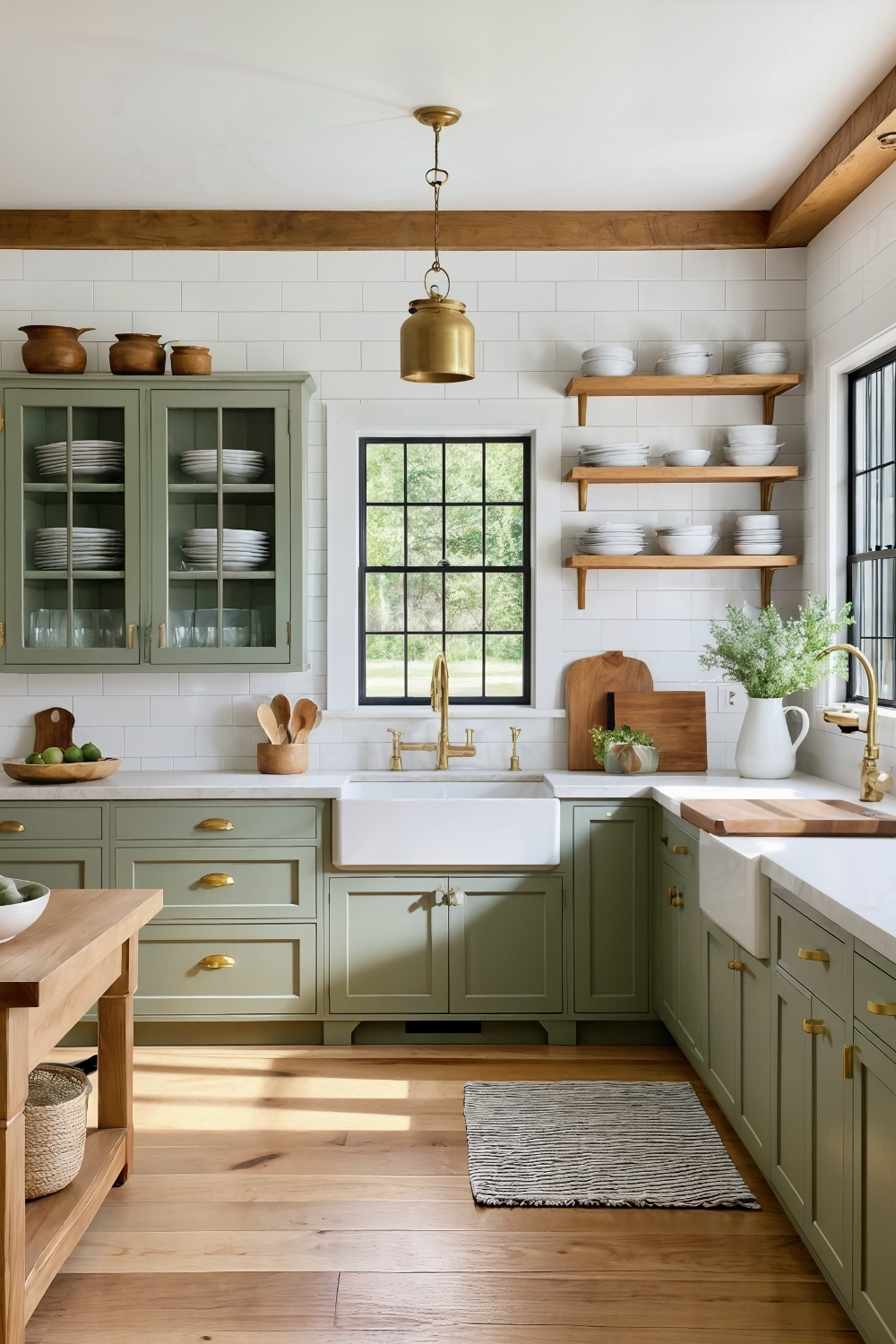
This soft approach often appeals to homeowners wanting subtle color integration with practical storage solutions. Sage green cabinet finishes paired with natural wood open shelving typically create the calming foundation enhanced by rustic display opportunities and airy spatial feeling.
Design consideration: Open shelving often requires organized display planning while sage green finishes need quality paint or stain products that resist kitchen moisture and wear.
Practical benefit: Sage green design often provides the peaceful atmosphere while incorporating accessible storage that encourages organized kitchen arrangements and easy access to daily items.
2. Deep Olive Green Statement Elements
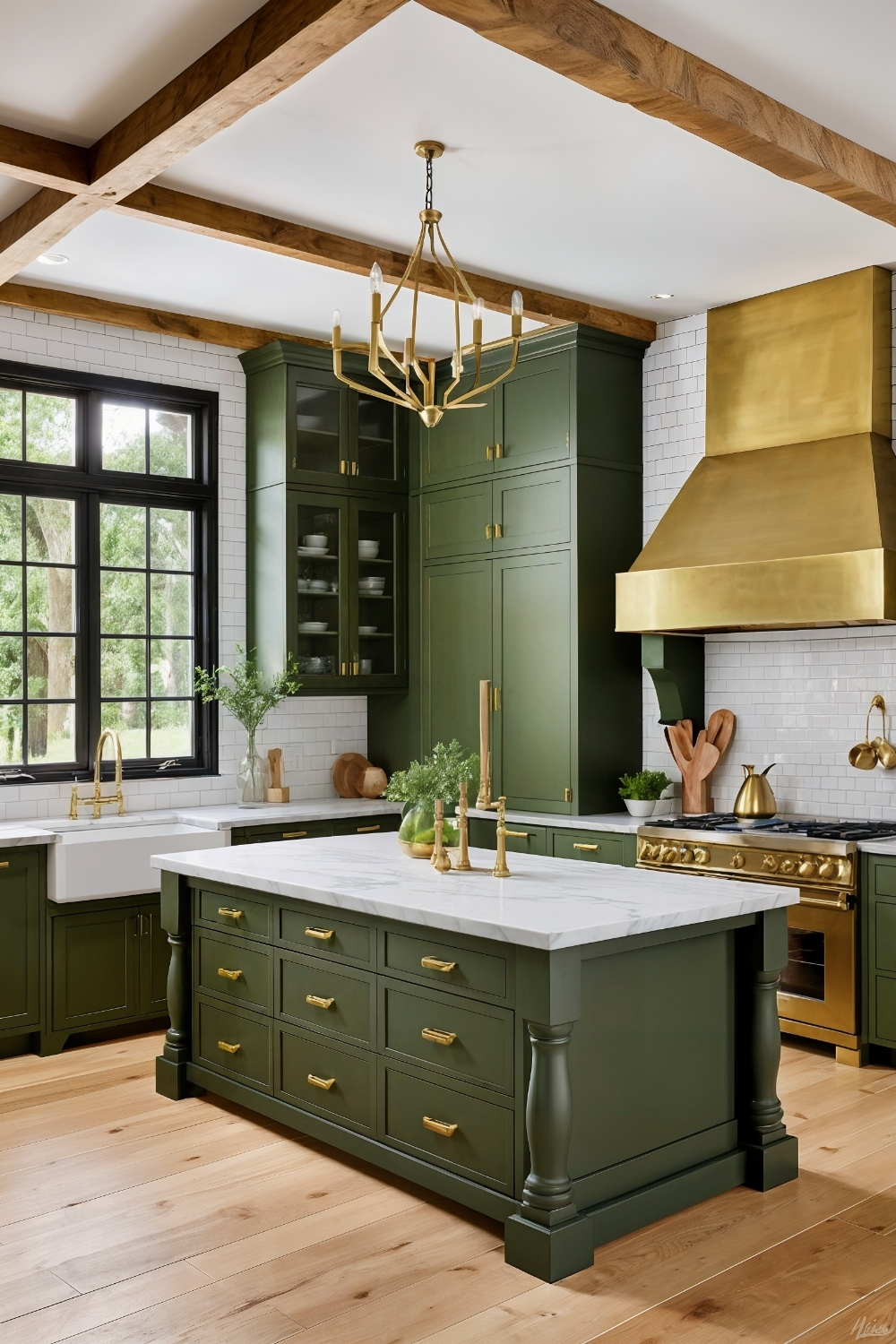
This bold approach often appeals to homeowners wanting sophisticated color depth with elegant material combinations. Olive green cabinetry paired with brass hardware typically creates the rich foundation enhanced by natural material contrasts and luxurious accent details.
Design consideration: Deep green colors often require adequate lighting and lighter counter surfaces while brass hardware needs regular maintenance to preserve appearance.
Practical benefit: Olive green design often creates the sophisticated atmosphere while providing the timeless appeal that ensures long-term satisfaction with renovation investments.
3. Green Beadboard Wall Treatment
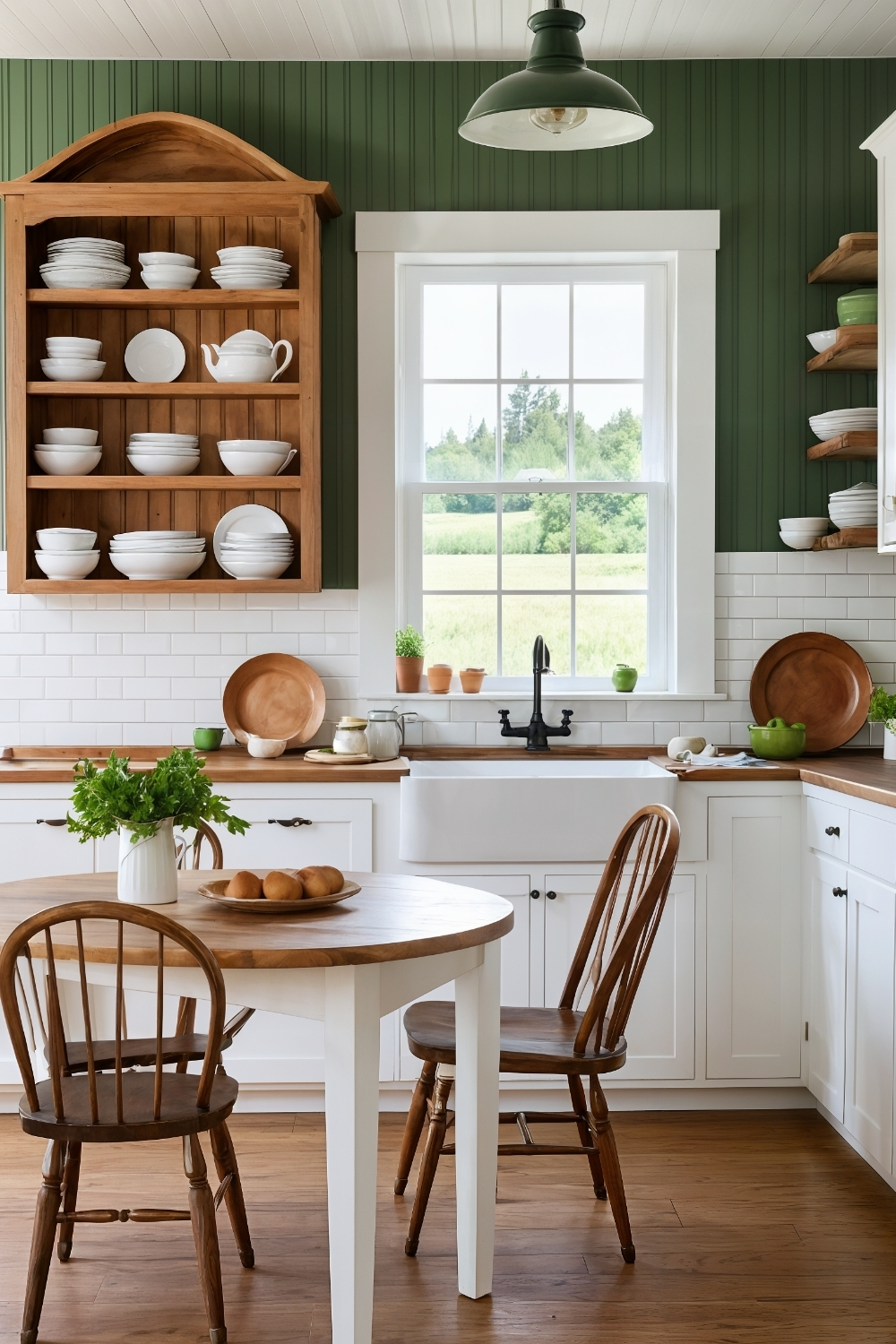
This textural approach often appeals to homeowners wanting authentic farmhouse character with period-appropriate wall treatments. Muted green beadboard paired with cream cabinetry typically creates the traditional foundation enhanced by old-world charm and classic two-tone aesthetics.
Design consideration: Beadboard installation often requires proper moisture protection while green wall treatments need coordination with existing cabinetry and lighting conditions.
Practical benefit: Beadboard design often adds the authentic farmhouse character while providing the durable wall protection that withstands kitchen humidity and daily wear.
4. Mint Green Freshness with Metal Accents
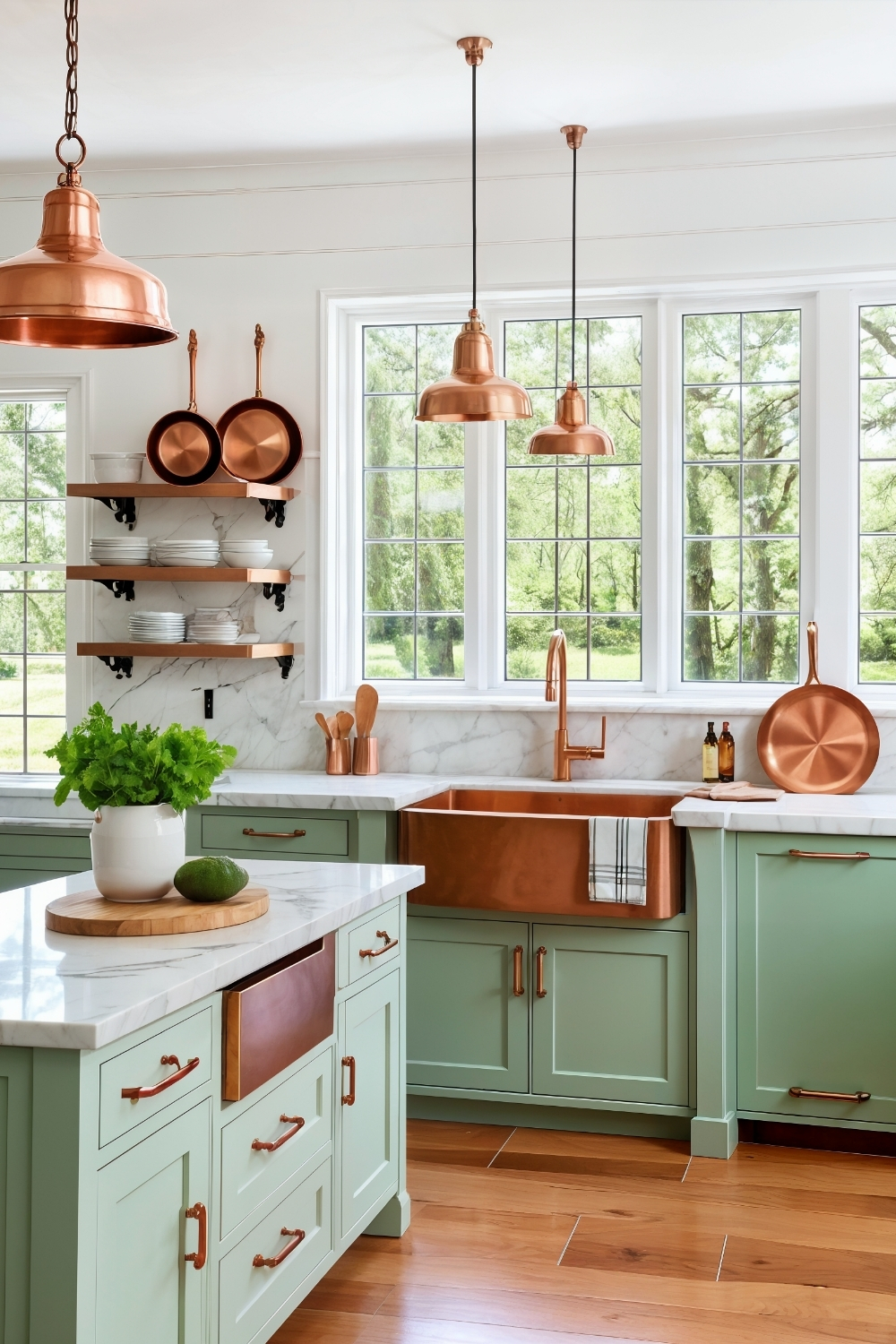
This light approach often appeals to homeowners wanting cheerful color integration with traditional farmhouse materials. Mint green cabinets paired with copper accent elements typically create the fresh foundation enhanced by warm metal contrasts and inviting color combinations.
Design consideration: Light green finishes often require quality paint products while copper elements need treatments to prevent tarnishing and maintain appearance.
Practical benefit: Mint green design often creates the uplifting atmosphere while incorporating traditional materials that provide authentic farmhouse character and timeless appeal.
5. Forest Green Island Focus
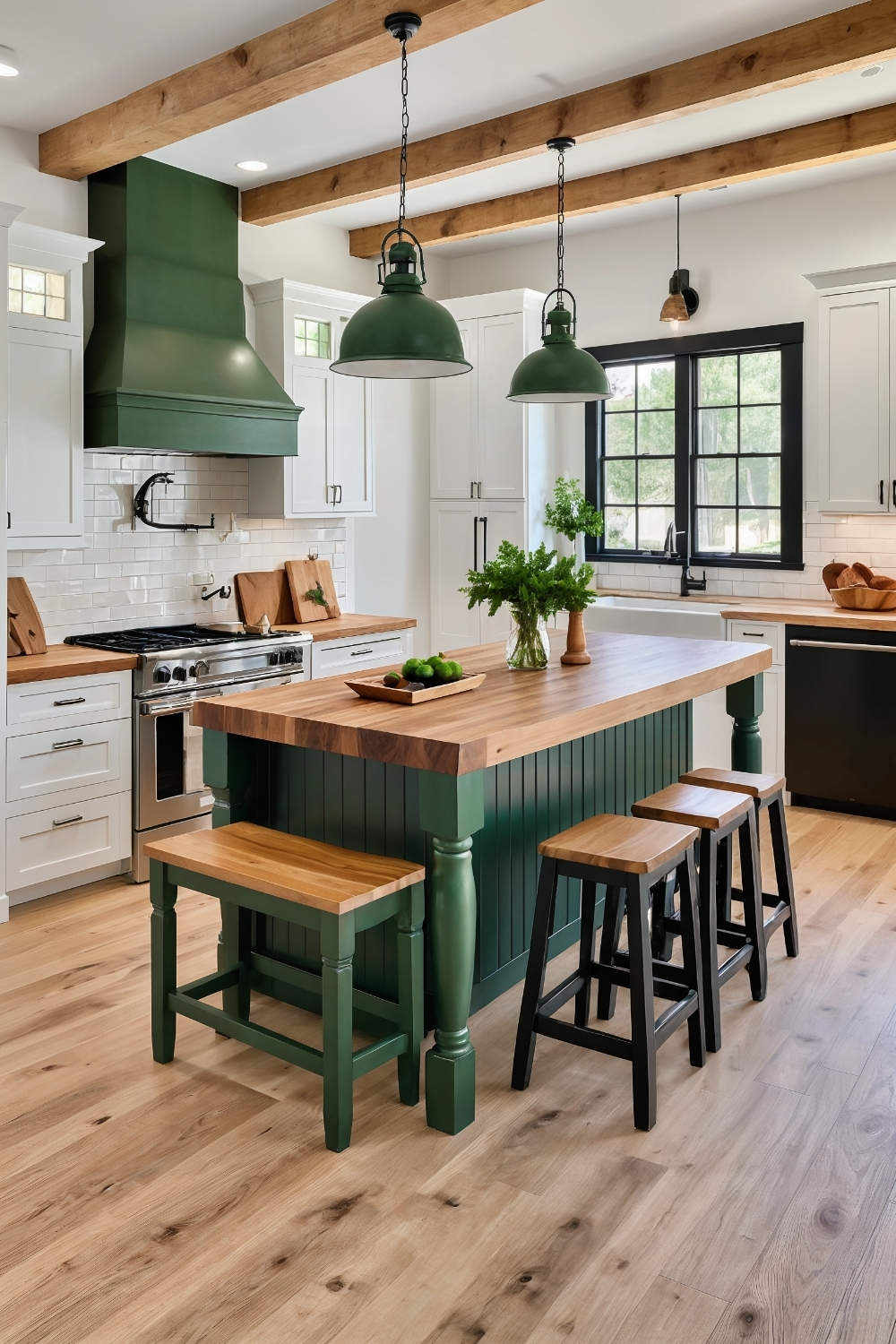
This focal point approach often appeals to homeowners wanting dramatic color statements with neutral surroundings. Deep forest green island cabinetry paired with lighter perimeter elements typically creates the striking centerpiece enhanced by rustic seating and natural countertop materials.
Design consideration: Dark green islands often require adequate task lighting while contrasting color schemes need careful coordination for visual harmony.
Practical benefit: Green island design often provides the dramatic focal point while maintaining the neutral flexibility that adapts to changing seasonal decorations and accessories.
6. Farmhouse Sink with Green Tile Integration
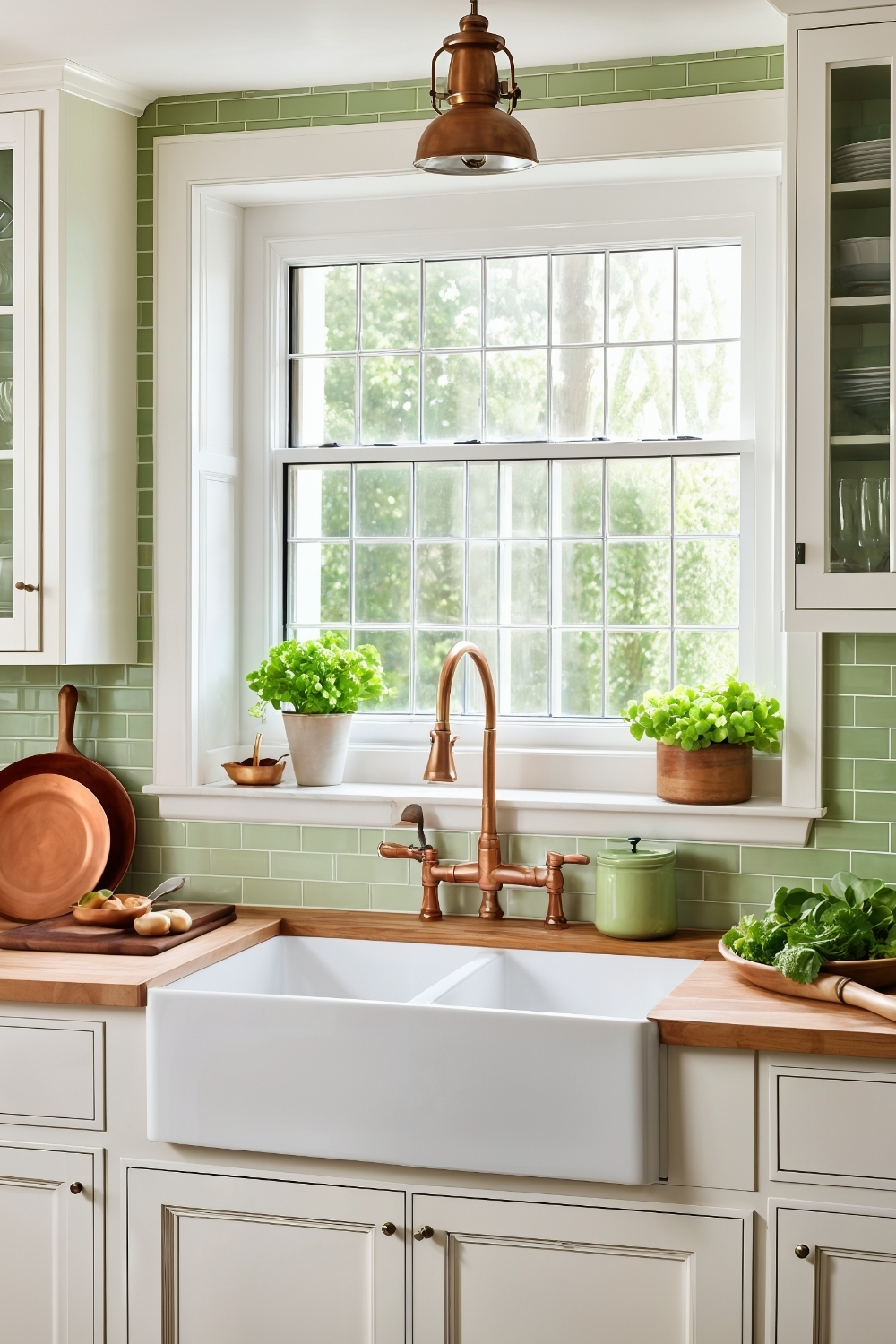
This classic approach often appeals to homeowners wanting traditional farmhouse elements with subtle color enhancement. Apron-front sinks paired with soft green subway tile typically create the authentic foundation enhanced by period-appropriate materials and timeless design elements.
Design consideration: Subway tile installation often requires proper waterproofing while farmhouse sinks need adequate structural support and plumbing considerations.
Practical benefit: Green tile design often adds the subtle color interest while incorporating the classic materials that define authentic farmhouse kitchen character.
7. Two-Tone Green and White Design
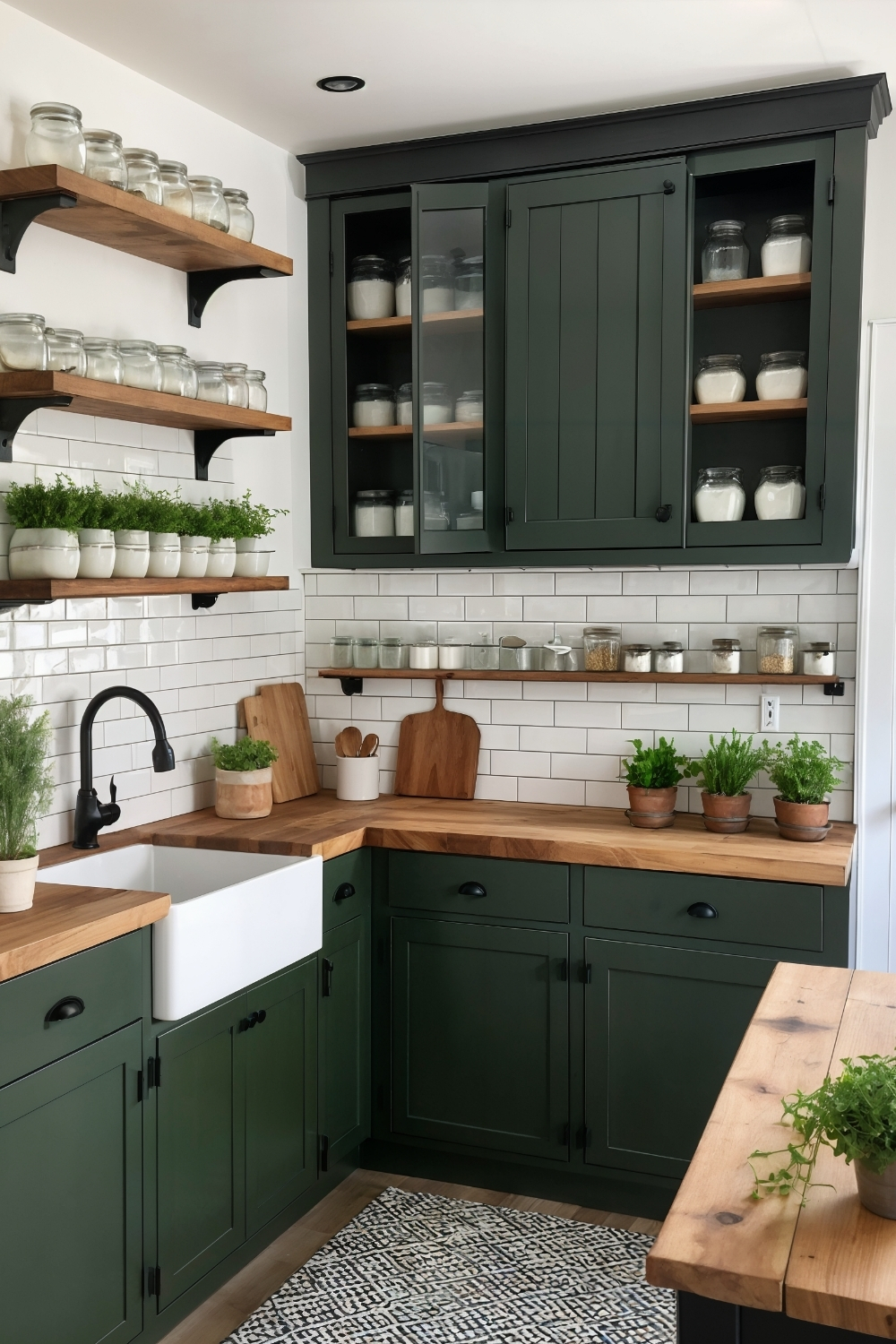
This balanced approach often appeals to homeowners wanting controlled color integration with bright, open aesthetics. Green lower cabinets paired with white upper cabinetry typically create the harmonious foundation enhanced by natural countertop materials and traditional proportions.
Design consideration: Two-tone designs often require careful color coordination while upper and lower cabinet combinations need proportional scaling for visual balance.
Practical benefit: Two-tone design often maximizes the bright, open feeling while incorporating the color interest that adds personality to farmhouse kitchen spaces.
8. Natural Wood with Green Accent Elements
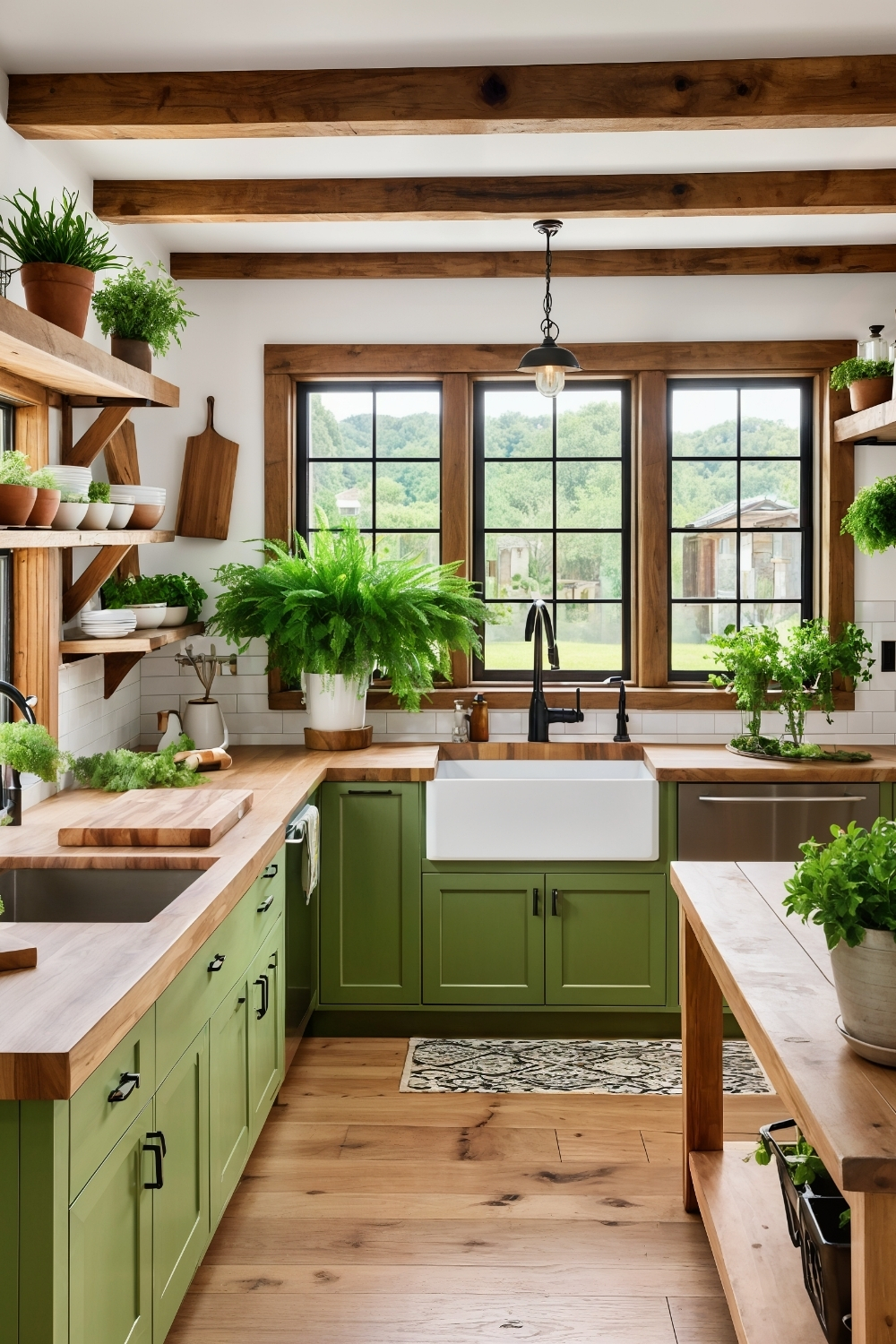
This subtle approach often appeals to homeowners wanting minimal color integration with authentic wood character. Natural wood cabinetry paired with green trim elements typically creates the organic foundation enhanced by reclaimed materials and traditional craftsmanship details.
Design consideration: Natural wood often requires proper finishing for kitchen environments while green accents need color selection that complements wood tones.
Practical benefit: Wood-focused design often provides the authentic farmhouse character while incorporating the sustainable materials that support environmentally conscious renovation choices.
9. Pastel Green Vintage Integration
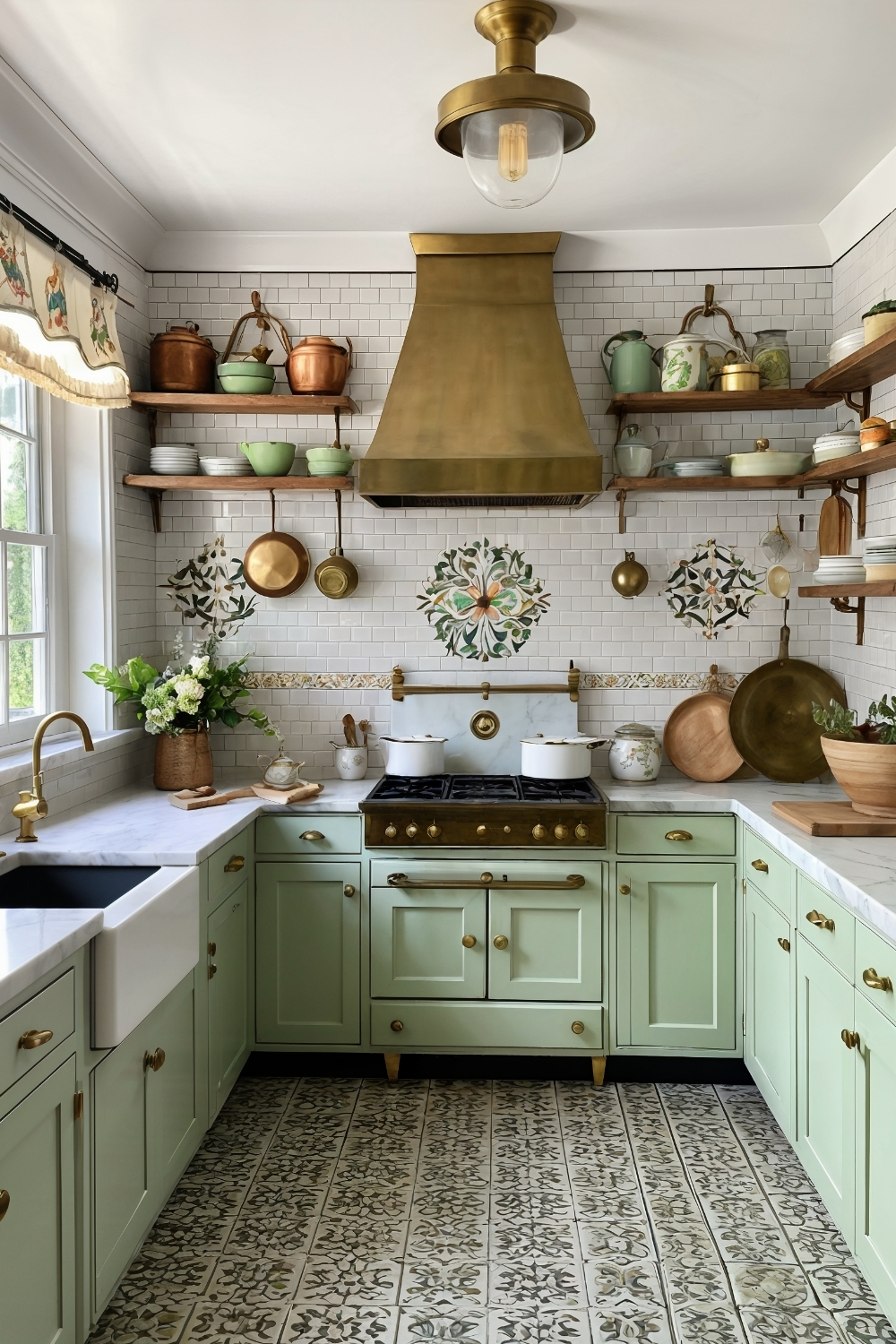
This nostalgic approach often appeals to homeowners wanting gentle color with authentic period hardware. Pastel green cabinets paired with vintage-style fixtures typically create the cottage foundation enhanced by antique finishes and traditional design elements.
Design consideration: Pastel finishes often require quality paint products while vintage hardware may need restoration or reproduction pieces for authentic appearance.
Practical benefit: Vintage-inspired design often creates the charming cottage atmosphere while incorporating the traditional elements that provide lasting farmhouse character.
10. Green Appliance Statement Pieces
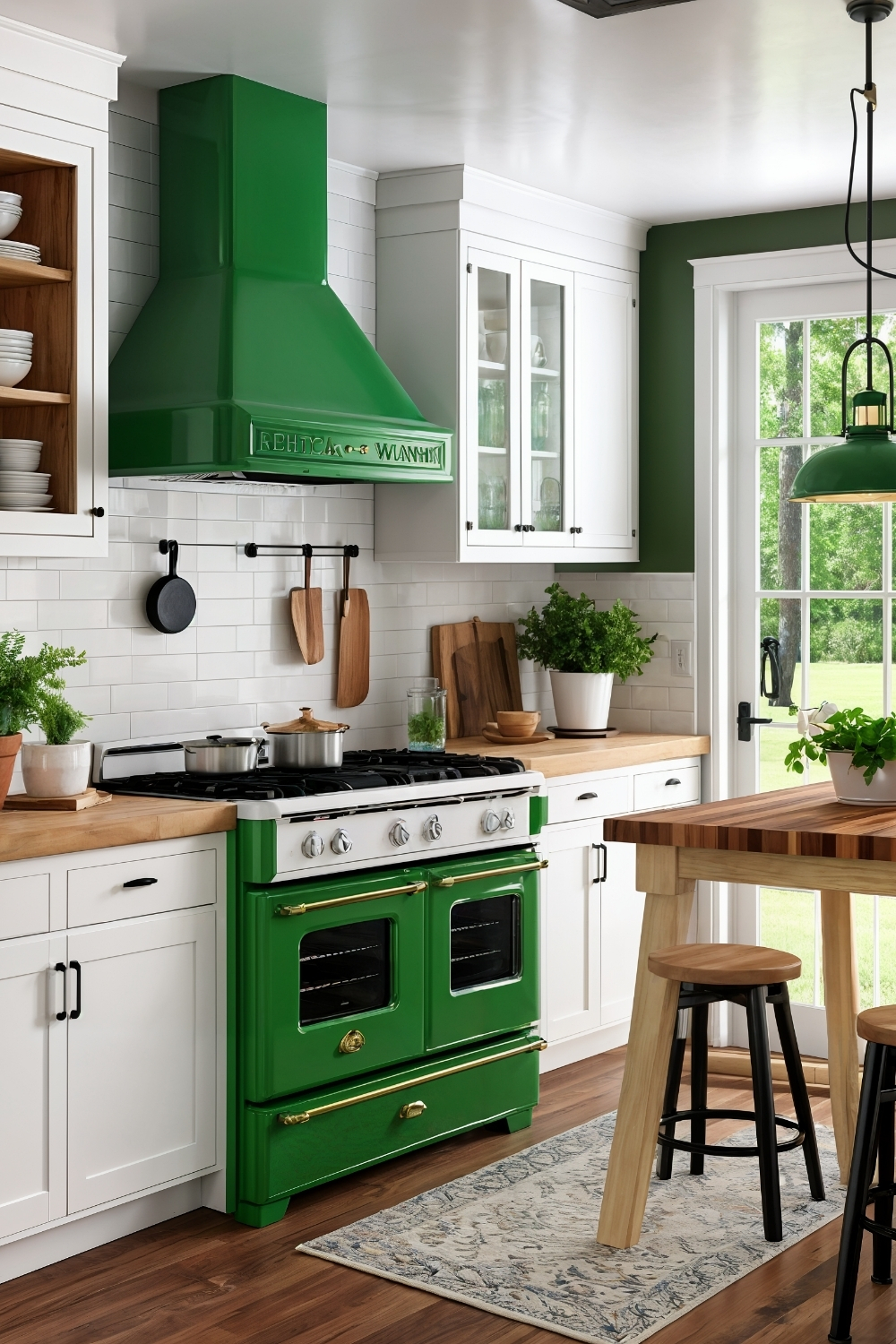
This bold approach often appeals to homeowners wanting colorful focal points with retro farmhouse appeal. Vintage-style green appliances paired with neutral surroundings typically create the distinctive foundation enhanced by period-appropriate styling and functional efficiency.
Design consideration: Colored appliances often require coordination with overall design scheme while vintage-style options may have different dimensions than standard appliances.
Practical benefit: Green appliance design often provides the unique character while incorporating the modern efficiency that supports contemporary cooking and food preparation needs.
11. Green Shaker Cabinet Simplicity
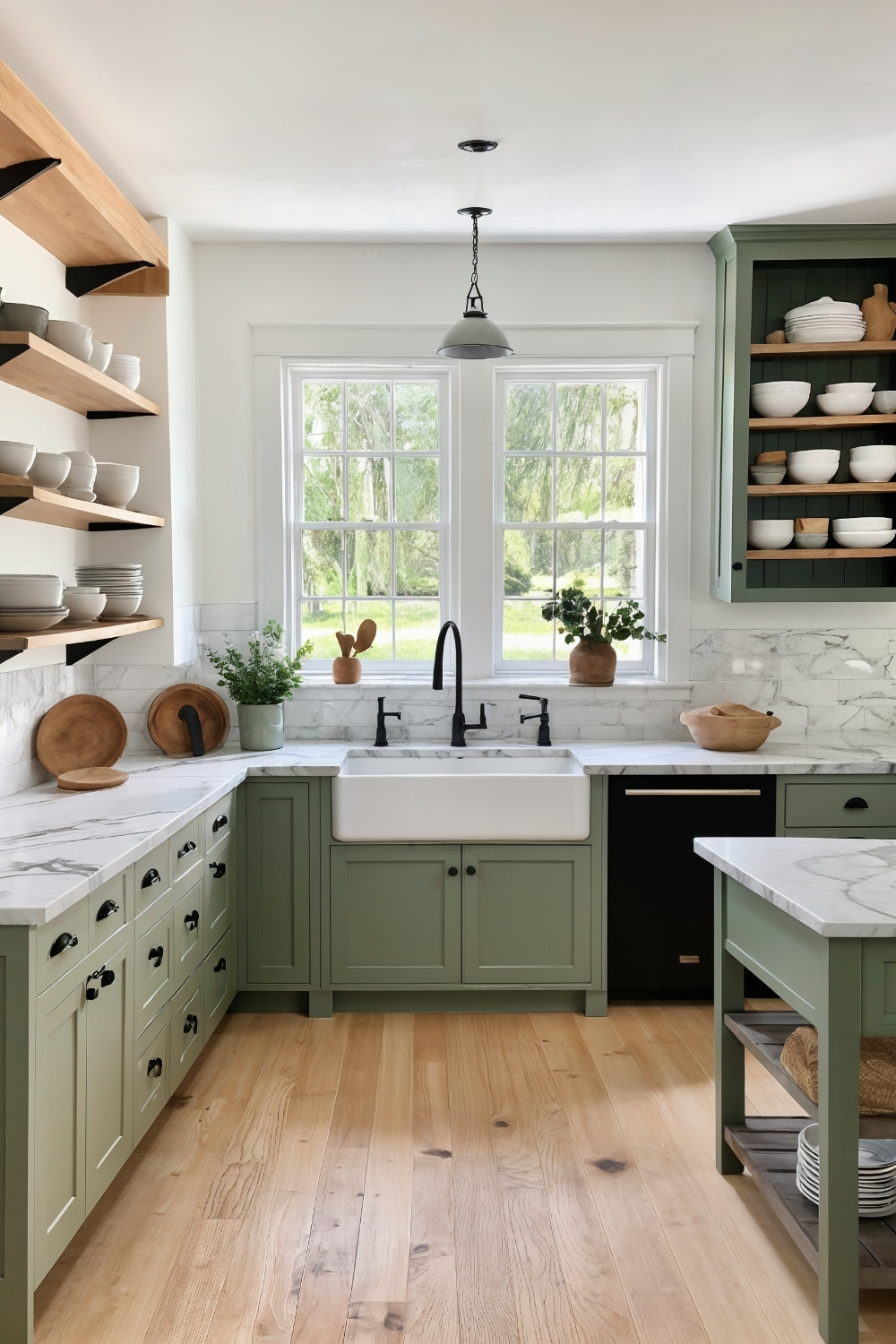
This clean approach often appeals to homeowners wanting contemporary farmhouse aesthetics with timeless cabinet styling. Muted green Shaker cabinets paired with simple hardware typically create the refined foundation enhanced by classic proportions and quality construction.
Design consideration: Shaker cabinet construction often requires precise joinery while muted green finishes need quality products that maintain color consistency over time.
Practical benefit: Shaker design often provides the timeless appeal while incorporating the clean lines that complement both traditional and contemporary farmhouse interpretations.
12. Green Architectural Detail Enhancement
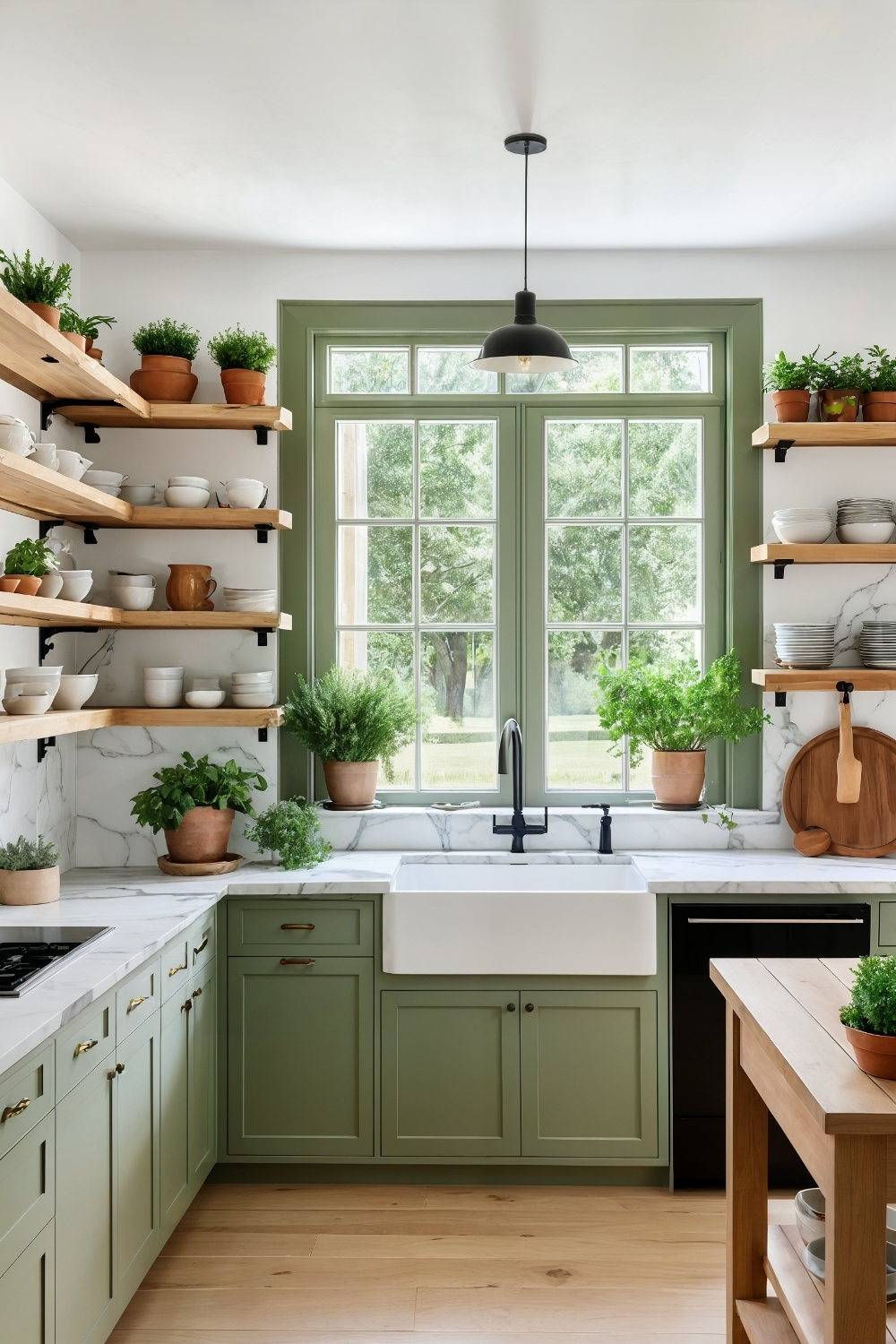
This subtle approach often appeals to homeowners wanting gentle color integration with existing architectural elements. Green window frames and door trim paired with neutral cabinetry typically create the coordinated foundation enhanced by natural light emphasis and outdoor view connections.
Design consideration: Architectural trim painting often requires proper preparation and quality exterior-grade paints while color selection needs coordination with existing elements.
Practical benefit: Architectural detail enhancement often adds the color interest while maintaining the neutral flexibility that adapts to changing design preferences over time.
13. Green Floor Tile Integration
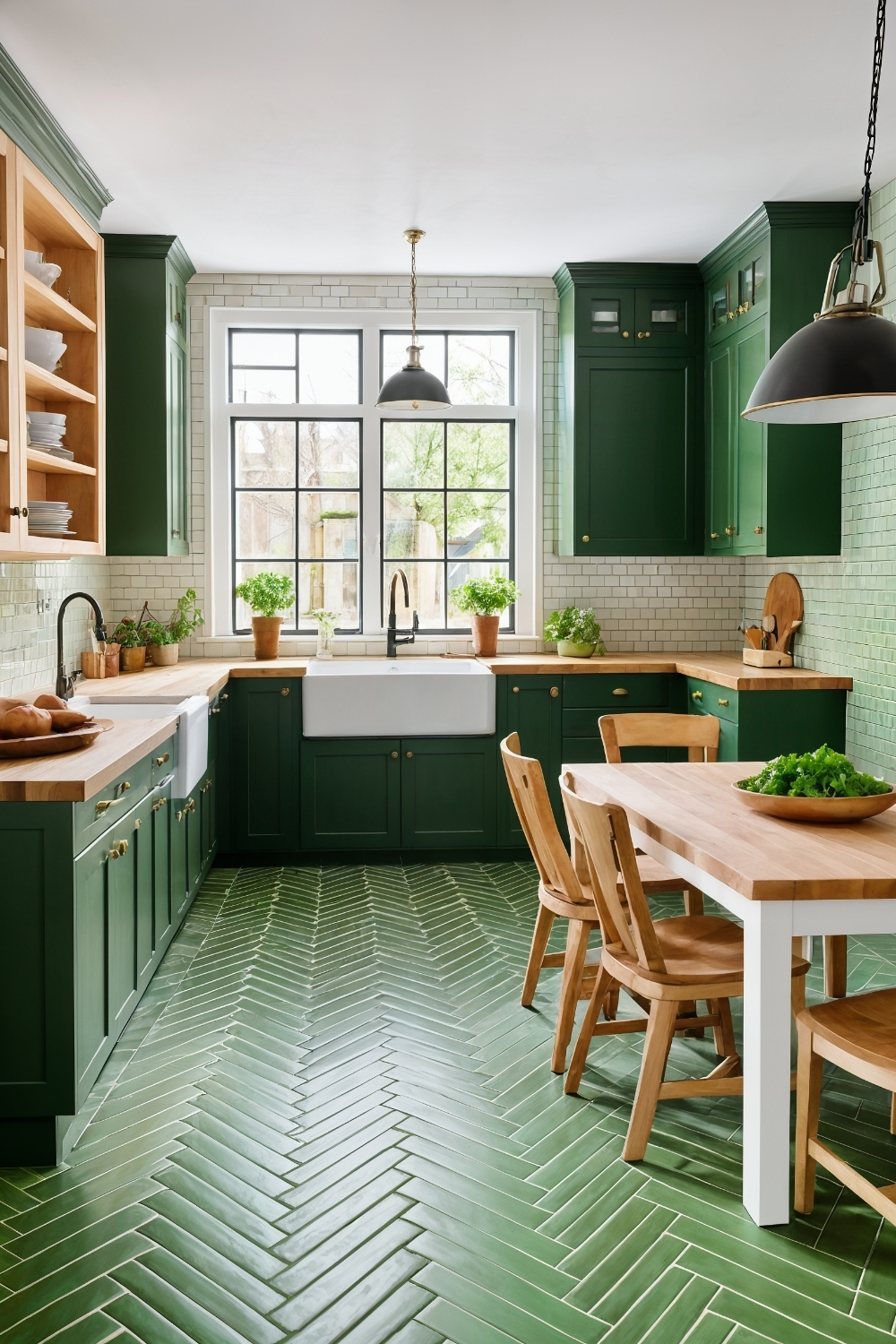
This unique approach often appeals to homeowners wanting distinctive flooring with farmhouse pattern elements. Green accent tiles paired with neutral cabinetry typically create the interesting foundation enhanced by traditional laying patterns and durable surface materials.
Design consideration: Green floor tiles often require careful pattern planning while tile installation needs proper substrate preparation and waterproofing.
Practical benefit: Green flooring design often provides the unique character while incorporating the durable materials that withstand kitchen traffic and moisture exposure.
14. Two-Tone Green Island Design
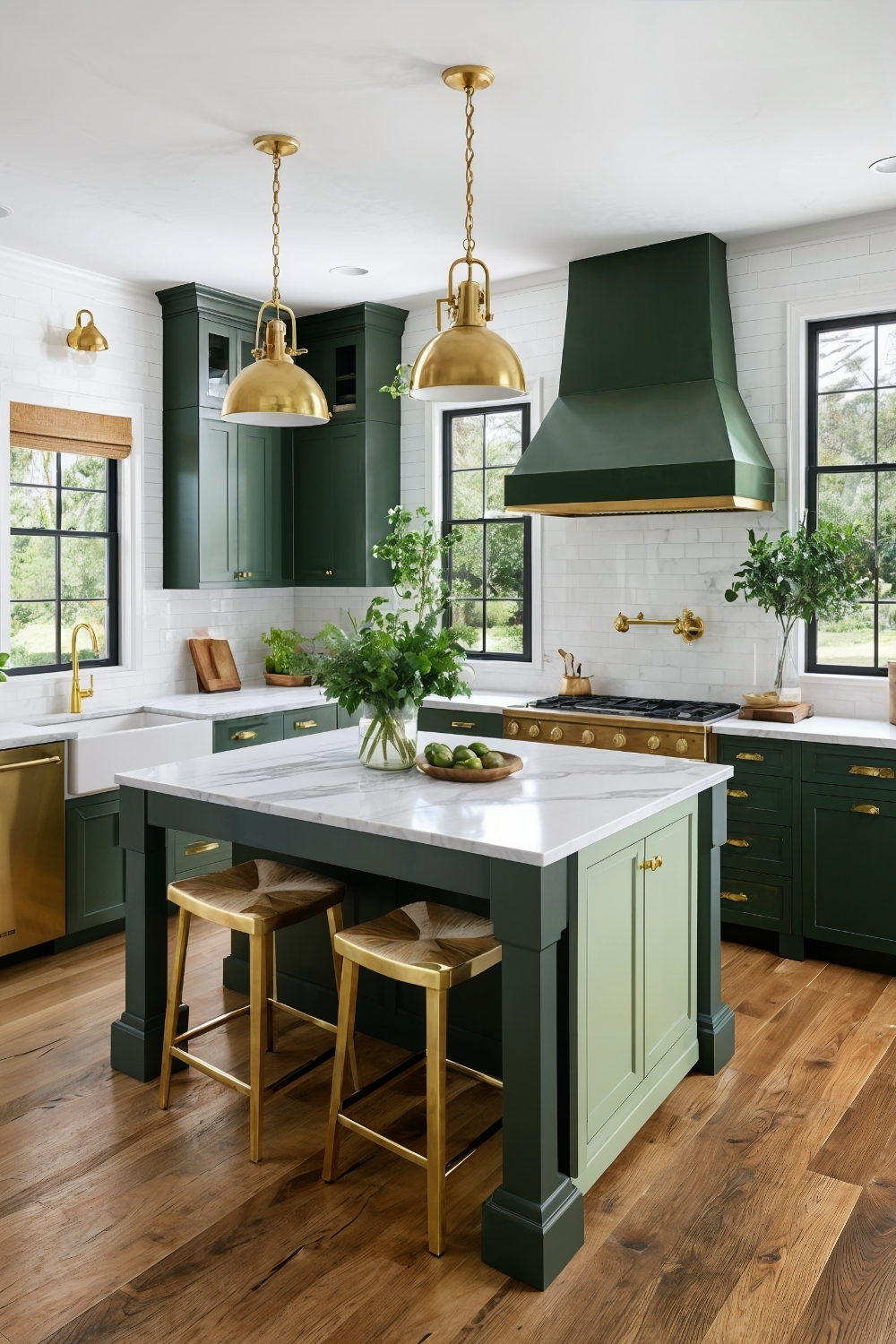
This layered approach often appeals to homeowners wanting sophisticated color depth with varied green tones. Multiple green shades on island elements paired with coordinated cabinetry typically create the complex foundation enhanced by natural countertop transitions and balanced proportions.
Design consideration: Multiple green tones often require careful color coordination while island construction needs adequate structural support for different finish materials.
Practical benefit: Multi-tone design often adds the visual interest while creating the sophisticated atmosphere that elevates farmhouse kitchens beyond basic rustic aesthetics.
15. Green and Wood Harmony
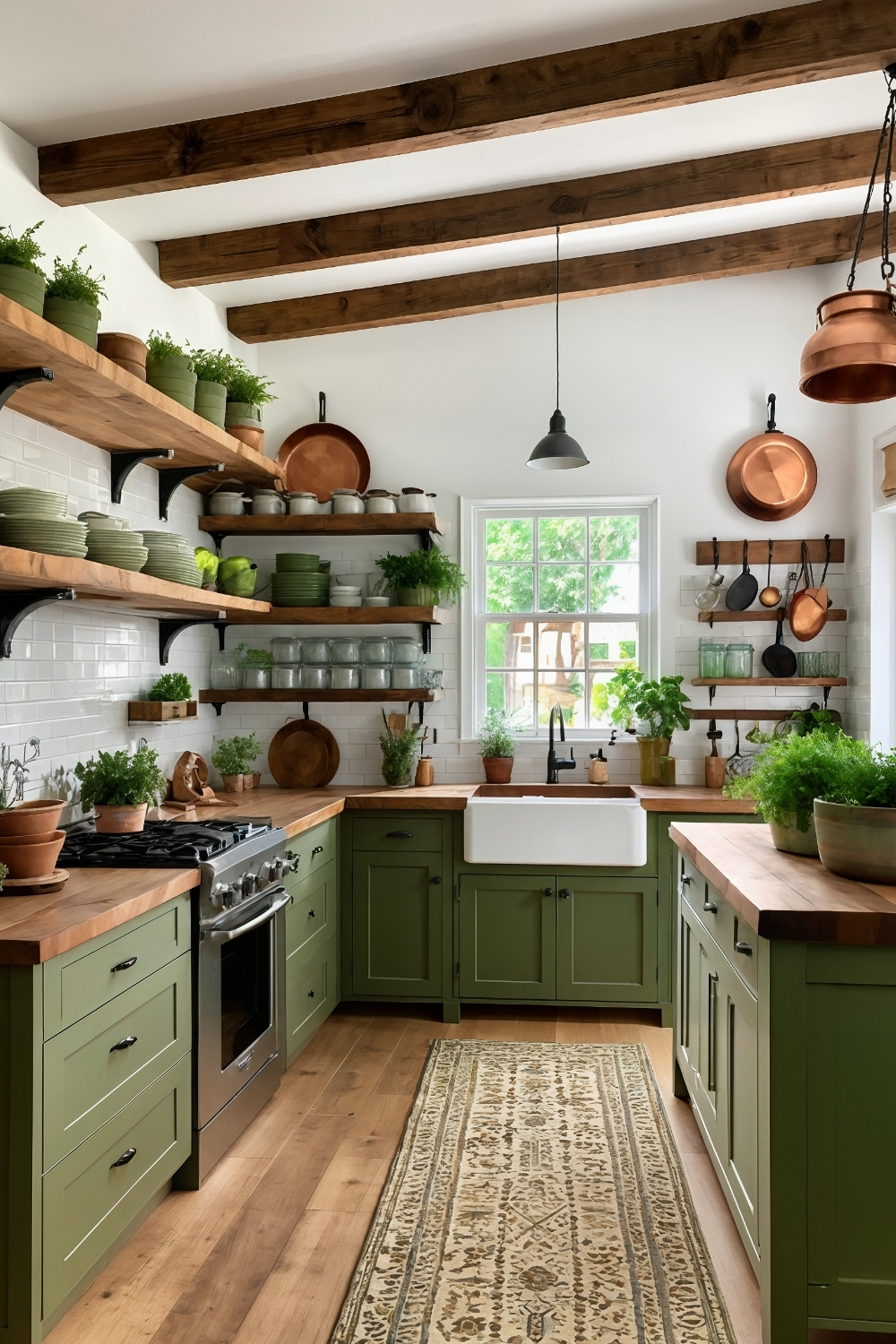
This natural approach often appeals to homeowners wanting organic material combinations with warm, inviting aesthetics. Green cabinet elements paired with natural wood accents typically create the harmonious foundation enhanced by reclaimed materials and sustainable design choices.
Design consideration: Green and wood combinations often require color selection that complements natural wood tones while both materials need appropriate finishing for kitchen environments.
Practical benefit: Natural material harmony often provides the warm, welcoming atmosphere while incorporating the sustainable elements that support environmentally conscious farmhouse design.
Planning Green Farmhouse Kitchen Projects
When planning green farmhouse kitchen renovations, several practical considerations often influence successful outcomes. Color selection typically requires understanding how different green tones perform under various lighting conditions and coordinate with existing architectural elements.
Material coordination frequently involves balancing green elements with traditional farmhouse materials like natural wood, stone, and vintage metals while maintaining authentic period character. Many green farmhouse projects benefit from gradual implementation that allows testing color choices before completing full installations.
Budget planning often prioritizes quality finishes and authentic materials that provide lasting value through durability and timeless appeal. Professional color consultation may prove valuable for complex color schemes or when coordinating multiple green tones throughout the space.
Maintenance considerations often require understanding care requirements for different green finishes and materials, particularly in kitchen environments where moisture, heat, and daily use affect longevity and appearance.
Remember: For any structural modifications, electrical work, plumbing changes, or custom millwork related to green farmhouse kitchen design, always consult with licensed professionals to ensure proper installation, safety, and code compliance.

